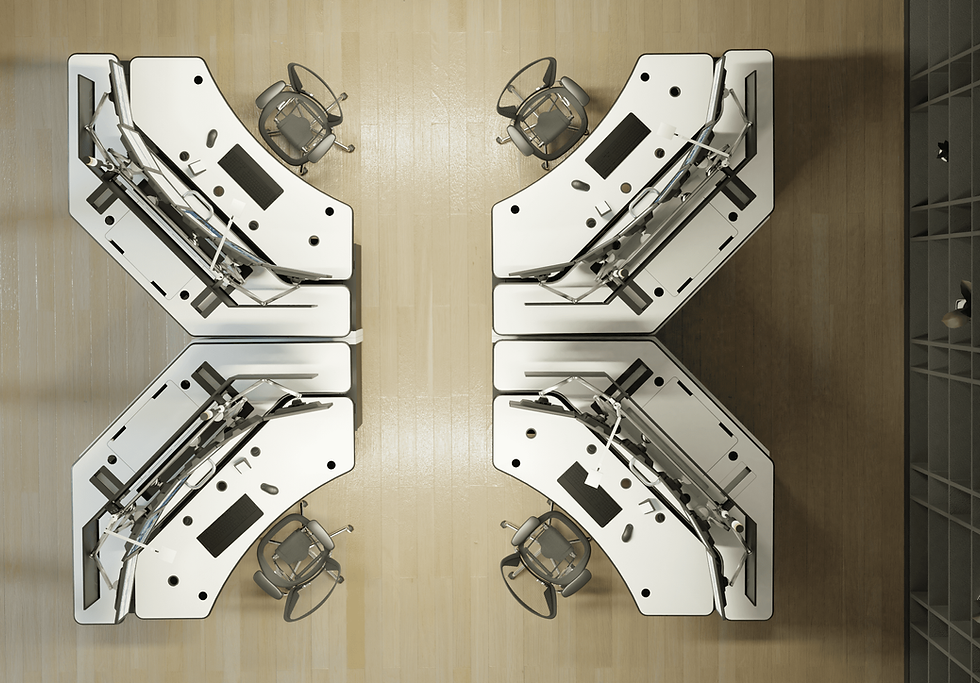5 Advantages of Ergonomic Workstations & Consoles
- Sustema

- Jun 16, 2020
- 2 min read
Improved employee productivity tops the list of the many advantages with ergonomically enhanced workstations. This article speaks to the main examples of success when incorporating an ergonomic workstation for your PSAP. A workstation that has been optimized for the rigorous demands of the 9-1-1 dispatch is not only structurally sounds it has been designed to allow an operator to function at optimal efficiency over a 12-hour shift.
Browse our console catalog to view Sustema's control room and dispatch consoles.
Take for example a Sustema designed dual height workstations for mission-critical operations: Starting with the keyboard surface we have designed a height Variable of 22” from the floor to 48”. Ideal for the 5th percentile person’s height to the 95th percentile person’s height design for a very large range of user sizes.
The monitor surface has an identical height variable, however, it is adjusted differently to accommodate for the optimal sightline as it relates to your monitor configuration. For example, when your standing and your eyes are looking forward at a slightly less than 90-degree angle providing the optimal sightline to avoid fatigue over extended periods of monitor time.
An additional factor to consider is the operator distance from the monitor configuration. We have developed a rail-mounted focal shelf that easily allows the operator to change that distance by simply sliding the entire monitor configuration forward and back for optimal monitor distance.
Another critical factor in ergonomics is the user reach zone. The reach zone is the area of the workstation that an operator can easily access when their upper arms are at rest alongside their body and with your elbows bent. The reach zone will vary depending on the size and configuration of the console but essentially the accessibility when an operator sweeps their forearms back and forth across their desk should be designed for easy access to monitors, keyboards, and phone systems without strain or breaking their elbow.
The final criteria for an optimized ergonomic workstation are designed with ample leg space under the work surface for comfort and blood circulation. Sustema has designed its workstations following the American National Standards Institute: ANSI/HFES 100-2007: Human Factors Engineering of Computer Workstations. This technical standard specifies acceptable applications of human factors engineering principles and practices to the design and configuration of the human-hardware interfaces in computer workstations.
I hope this article helps to illustrate the benefit of ergonomic workstations. Looking forward to hearing from you soon, thanks for reading! If you have any questions regarding ergonomic workstation consoles please contact us at info@sustema.com or through our online chat tool to speak with one of our representatives.




Comments